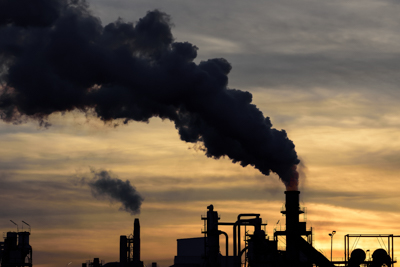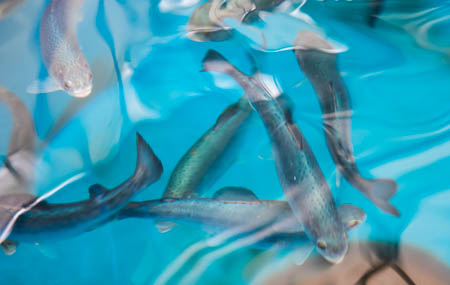A $2 million grant from the Department of Energy will support a partnership between UC Santa Cruz’s ecological aquaculture research team and the company Global Algae Innovations to test whether Spirulina microalgae grown using carbon dioxide captured from power plant emissions could be an effective aquaculture feed ingredient for farm-raised rainbow trout.
This project is one of seven nationwide that received a total of $16.5 million in federal funding to advance technologies that reduce greenhouse gas emissions by using algae as a carbon sink. Algae can absorb carbon dioxide waste and use it to grow, and the resulting algal biomass can then be turned into animal feed, biofuels, and other useful products.
Global Algae Innovations will use carbon dioxide captured from flue gas—the exhaust from combustion power plants—to grow and process a microalga called Spirulina sp. while maximizing energy and cost efficiency. Assistant Professor of Environmental Studies Pallab Sarker will then test the resulting product to better understand its biochemical characteristics, including nutrients, anti-nutrients, minerals, and trace or heavy metals, compared to conventionally grown Spirulina.
Sarker will also add the product to an experimental fish feed formula to see how well rainbow trout can digest the flue gas-grown Spirulina, whether they like the taste, and how much of the nutrients they absorb versus excrete in their waste, compared to conventionally grown versions of the algae. The ultimate goal of the partnership is to identify ways to fine-tune the production of flue gas-grown Spirulina to maximize its potential as a fish feed ingredient.
“We have the technology to grow algae inexpensively, and there’s a lot we can do to change and optimize the biomass, but to do that, we also needed to bring in UC Santa Cruz’s aquaculture experience,” said Dave Hazlebeck, founder and CEO of Global Algae Innovations. “This is our first long-term, in-depth testing where we are actually trying to grow algae specifically for fish feed, so it has been a joint venture from the beginning.”
Hazlebeck hopes that flue gas could prove to be an effective and inexpensive source of concentrated carbon dioxide to help scale up the commercial production of Spirulina while more efficient means of capturing carbon dioxide directly from the air are being developed. And if the current experiments are successful, Sarker says that, for rainbow trout, Spirulina could potentially become a sustainable, high-performing alternative source of protein to replace conventional fish feed ingredients like wild-caught fish products or terrestrial crops.
“I believe that aquaculture, when done correctly, can provide more environmental benefits than harm,” Sarker said. “By working together interdisciplinarily and with industry partners on projects like this, we can offer critical improvements to this rapidly expanding industry, so that commercial fish farms can benefit in the near future.”




